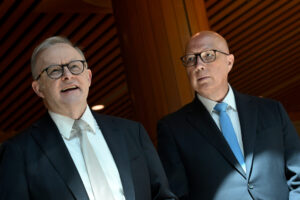First published by the Australian Financial Review – here
Economic modelling is like a meth lab, it can make you rich or blow up in your face. And like cooking meth, economic modelling gets more dangerous when it is done fast by those new to the industry.
But despite the dangers, and the fact he was badly burned by Treasury’s tax modelling, poor Scott Morrison was scorched again last week when the modellers at BIS Shrapnel blew up both their own credibility and that of the Treasurer.
Last week BIS Shrapnel released modelling that assumed changing tax policy to limit the negative gearing tax concessions to new housing would lead to a reduction in investment in the new housing sector. We were then told that the 7200 fewer homes that would be built would lead to a reduction in GDP of $19 billion. You don’t need a PhD in economics to figure out how ridiculous that claim is, a calculator would do.
The ability to use the divide key on a calculator should have allowed anyone in the Treasurer’s office, or the Department of Treasury, to figure out that there was something very, very wrong with the BIS Shrapnel modelling. The idea that each house built in Australia contributes $2.6 million to GDP is simply absurd.
Among the many mistakes in the BIS Shrapnel modelling, which Treasurer Morrison described as “credible” last week, was an economics 101 howler. When economists calculate the value of all the stuff produced in a country (gross domestic product) they have to be careful to avoid double counting.
The value of the wheat a farmer sells to a miller needs to be deducted from the value of the flour, likewise the value of the flour from the bread sold by the baker and the value of the bread from the takeaway sandwich. Unfortunately for the reputations of BIS Shrapnel and Treasurer Morrison, the modelling of the alleged economic impact of reforming negative gearing made no such adjustment. Whoops.
But modelling purporting to show that the ALP’s policy was going to “cost the economy” $19 billion was apparently just too seductive for the Treasurer to resist.
Why bother reading the report carefully and pressure testing its assumptions? Why bother asking yourself, or Treasury, if the headline results pass the laugh test? Why miss the moment when no one else ever reads past the executive summary of a modelling report?
RIDICULOUS CLAIMS
Scott Morrison is not the first politician to endorse the ridiculous claims of economic modellers. Back when Kevin Rudd was trying to sell the Carbon Pollution Reduction Scheme, Treasury modelling showed that as the carbon price rose steadily, the methane emissions from each sheep in Australia would fall steadily.
Yep, they assumed that the higher the carbon price the fewer the farts. And back when Tony Abbott was waging his war against carbon pricing it was claimed that the emission reduction instrument preferred by most economists would “strip a massive $600 billion from economic growth”. Yeah, right.
Unsurprisingly, faith in economic modelling typically only seems to hold when the economic modeller confirms a politician’s prejudice. For example, last month when Treasury modelling showed that cutting the personal income tax rates would have virtually no impact on the Australian economy, the government was quick to slap them down. Such models, we were told by Arthur Sinodinos, “doesn’t look at dynamic effects”.
But while Treasurer Morrison might not be the first politician to be caught relying on ridiculous modelling, he could help himself, and his colleagues, to be the last. Just as kids buying drugs at a festival don’t really know the quality of what they are buying, humans reading modelling reports understandably find it hard to determine the quality of what they are being asked to digest. Politicians and the public need the economic equivalent of pill testing.
While you can’t legislate against stupidity, it would be simple for state and federal governments to insist that economic modelling designed to influence their thinking conforms to a code of conduct spelling out minimum standards of transparency and disclosure.
Why would modelling houses with nothing to hide refuse to disclose who commissioned the research, how the key assumptions were selected and which researchers took personal responsibility for the quality of the analysis?
Sunlight, they say, is the best disinfectant. After last week’s debacle, let’s hope all economic modelling is subject to the kind of scrutiny that Treasurer Morrison assumed would never eventuate.
Richard Denniss is the chief economist for The Australia Institute. @RDNS_TAI
Related documents
Between the Lines Newsletter
The biggest stories and the best analysis from the team at the Australia Institute, delivered to your inbox every fortnight.
You might also like
Here’s something absolutely cooked about books in Australia
It’s a big week for Australian culture, with announcement of the shortlist for the Miles Franklin Literary Award, one of the country’s top writing prizes.
5 ways and 63 billion reasons to improve Australia’s tax system
With a federal election just around the corner, new analysis from The Australia Institute reveals 63 billion reasons why our next Parliament should improve the nation’s tax system.
The sad phenomenon of Australia’s unfunded excellence
In Australia, prize-winning artists, writers and musicians pay more tax than some multinational fossil fuel companies with turnover in the hundreds of millions of dollars.



